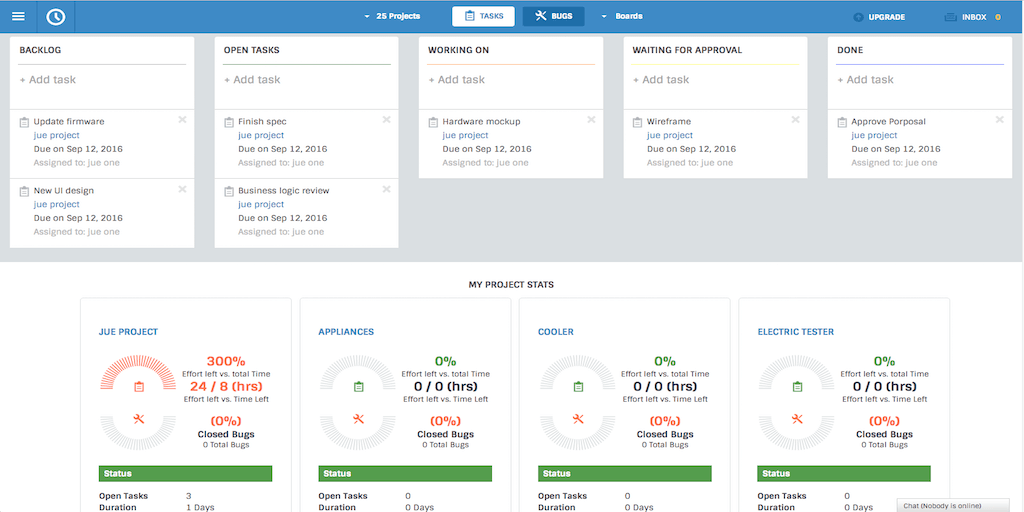There is a proliferation of project management software leaving many buyers overwhelmed by choice. For those following the Agile methodology, the decision is often between purchasing a standalone Kanban Board tool and an end-to-end project management solution that includes Kanban as a feature.
In some scenarios a Kanban Board is a powerful tool. But it is not relevant for all organizations and processes. We will help you understand when, where and how to use Kanban.
We will cover the following topics:
-
What is Kanban
-
Scenarios where Kanban is applicable to project
-
When not to use Kanban
-
A step-by-step guide of how to use Kanban
-
Review of Kanban features
-
Commercial and open source Kanban options
Although we are thorough in our review, it is possible that we have not covered every Kanban vendor, especially the niche providers. We suggest that you use this guide in conjunction with your own research and review specific vendor websites for more detailed information.
We cannot list every industry or use case so please use this as a starting point. When evaluating software, make sure you look at the specific requirements of your organization and team before making a purchase decision.
What is a Kanban Board?
A Kanban Board is a visualization tool used to manage a process or project.
Kanban is the Japanese word for “Card” and is based on the just-in-time delivery system pioneered by Toyota. Toyota provided workers cards to mark each step in the manufacturing process.
How does it work? Very simply. Instead of referring to complex charts, diagrams or detailed documentation, workers see a visual image of the specific task that they are working on. The follow the task throughout the workflow (from Backlog, to Open Task to Working On to Waiting for Approval to Done).
Source: Binfire
Kanban is based on the following principles:
-
Each worker views the specific task as it moves through the workflow. For instance, in the image above, the “final testing” task is an Open Task because it has not begun. As soon as it moves to Working On, the entire team will see this. At its core, Kanban is a simple and powerful visual communication.
-
Limits on Work in Progress (WIP). At the start of the project that team can decide that when a task takes a specified number of days longer than originally planned, the team will stop work and collectively tackle the task. In a Kanban Board, the team can decide that when a list has too many tasks, the limit has been reached and no additional tasks can be started.
-
Manage Flows. With Kanban, one can manage how fast a task moves from one list to another. If the task is stuck on one list, then the system will flag a warning sign or send a notification when the number of limits has been reached. (See 2 above).
-
Make Process Policies Explicit. In order to analyze a process, it must be clear and explicit. The Kanban Board visualization of the process enables the group to agree to the process at the beginning of the project and for everyone to understand it. Agreement is reached on tools to use, how to manage change and bug tracking.
-
Improve Collaboration. Effective teams will stop and work collaboratively when tasks limits are reached (see 2 above). They will work to find out whether the original limits were correct, whether there are issues or concerns with processes and how to fix them.





Pingback: 25 mistakes project managers make - Collaboration Corner
Pingback: 25 mistakes project managers make - Collaboration Corner
Pingback: 25 mistakes project managers make - Collaboration Corner
Pingback: 25 mistakes project managers make - Collaboration Corner
Pingback: 25 mistakes project managers make - Collaboration Corner
Pingback: Free project management software for Students - Collaboration Corner
Pingback: Free project management software for Students - Collaboration Corner
Pingback: Free project management software for Students - Collaboration Corner
Pingback: Free project management software for Students - Collaboration Corner
Pingback: Free project management software for Students - Collaboration Corner